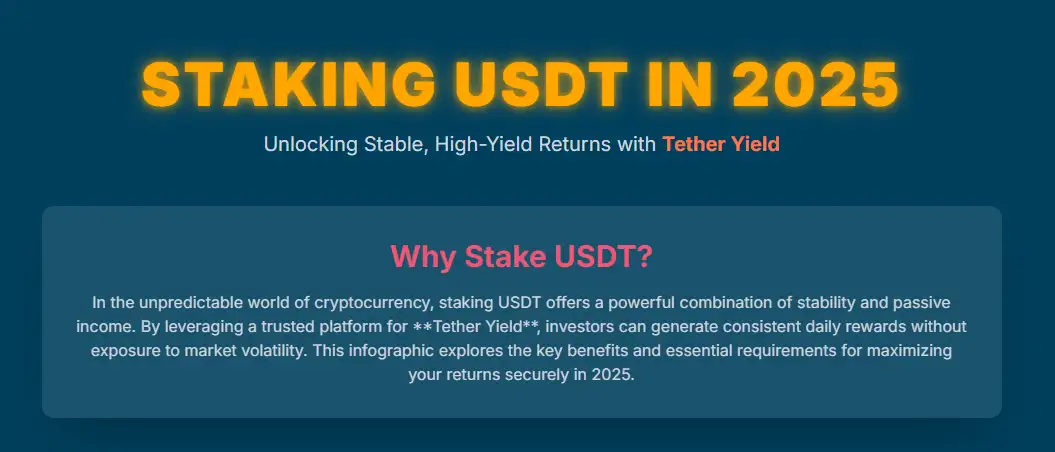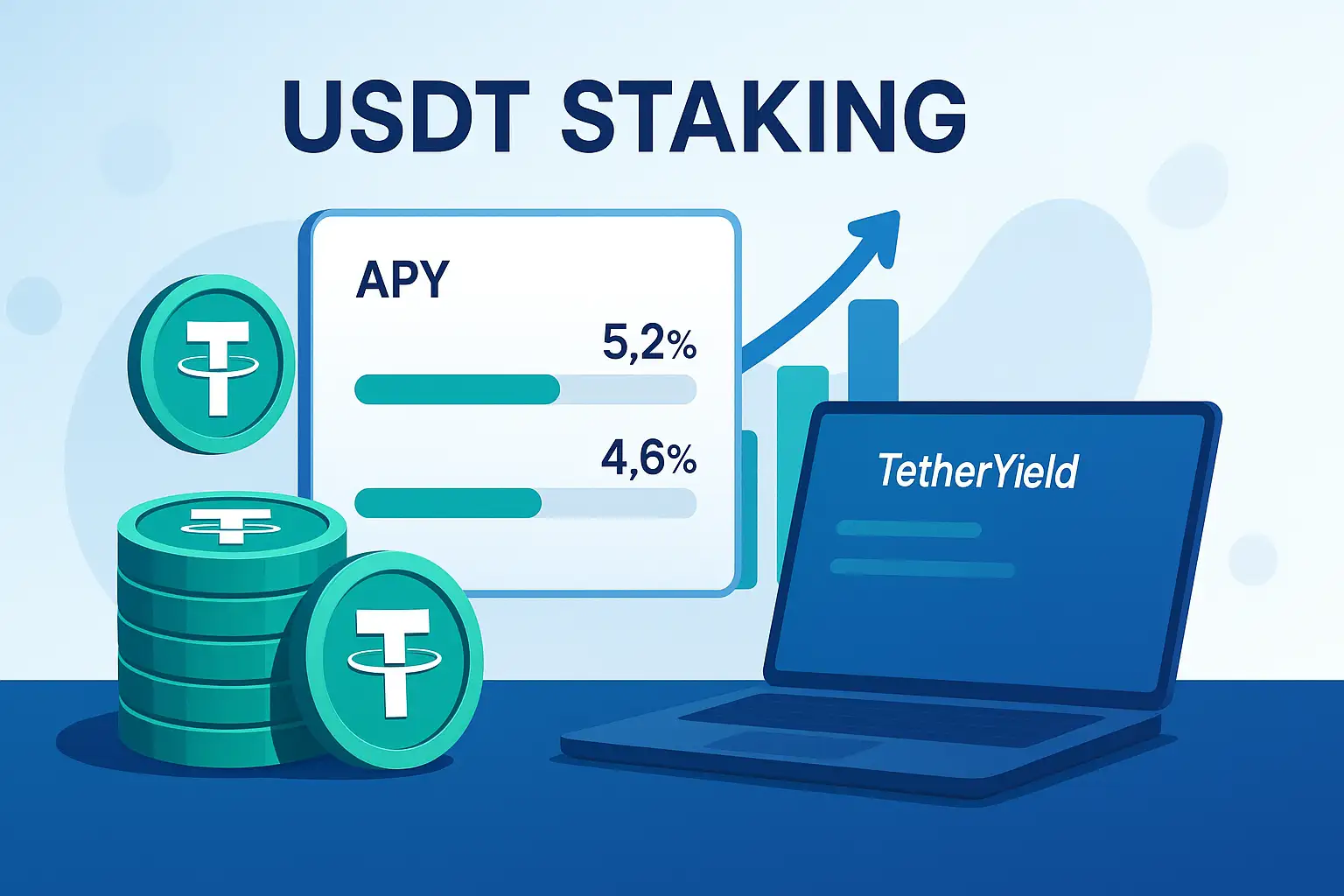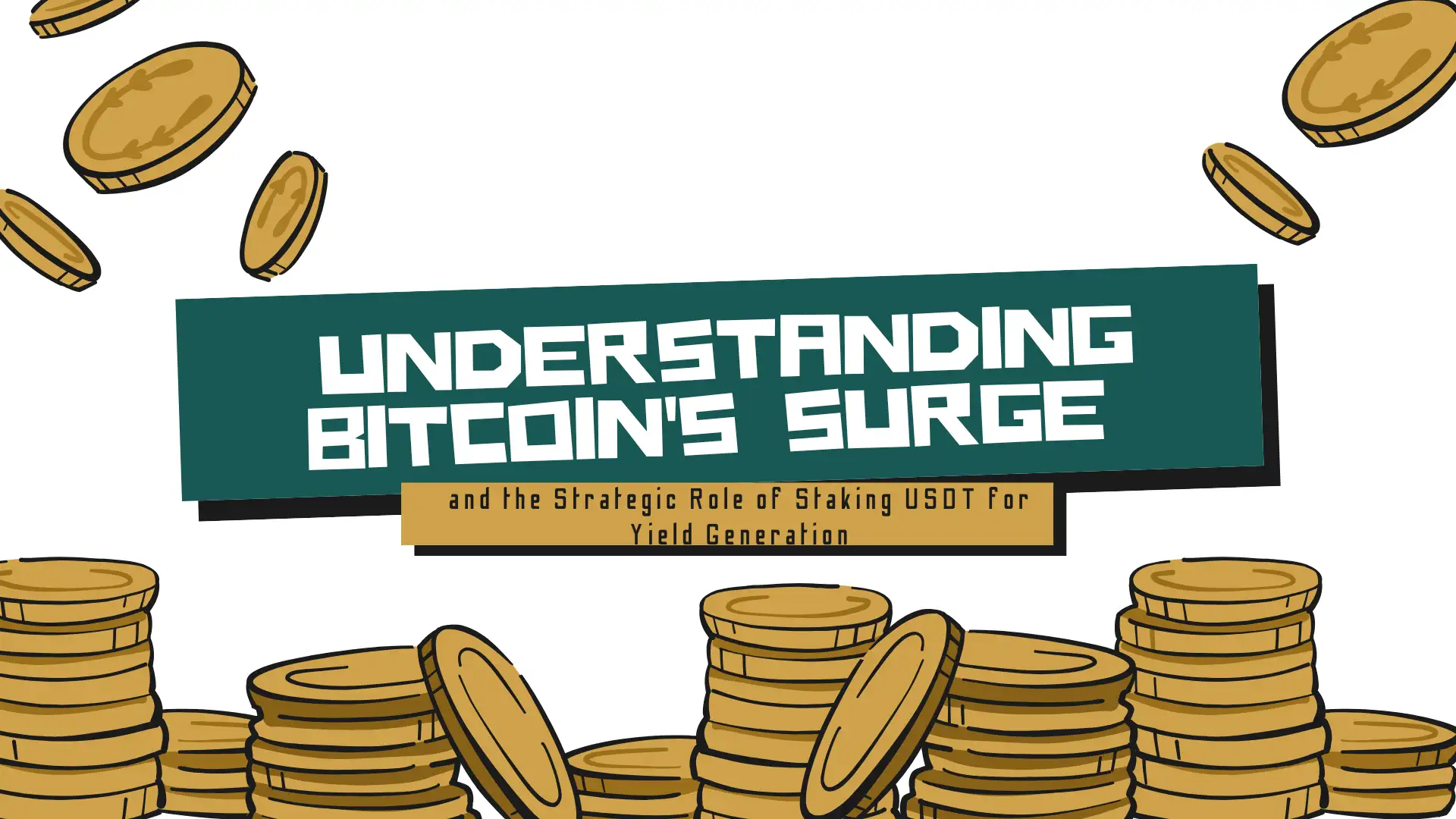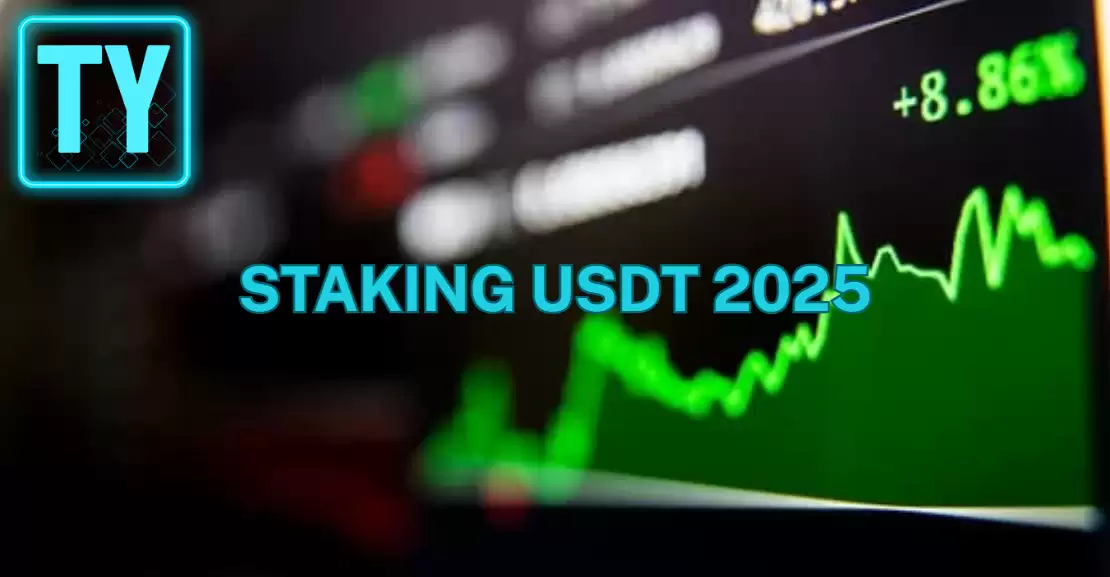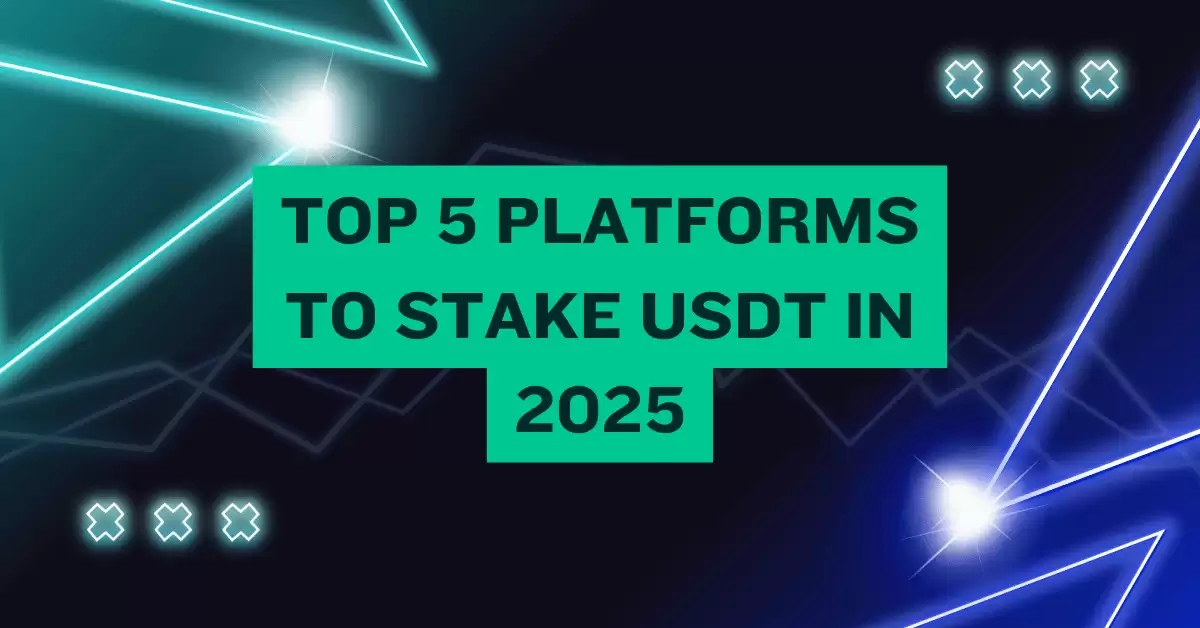As the digital asset landscape matures, 2025 stands as a pivotal year where stablecoin yield generation has evolved from a niche strategy into a cornerstone of sophisticated portfolio management. For investors seeking to navigate market volatility while generating consistent returns, earning a Tether Yield has become an indispensable tool for both capital preservation and growth. This report provides an exhaustive guide to the five core benefits that make USDT staking a compelling strategy and the five essential requirements that are non-negotiable for success. It positions the premier Tether Yield service as the definitive solution for discerning investors aiming to optimize their stablecoin holdings.
Deconstructing USDT Staking: A 2025 Primer on Earning Yield
Understanding the mechanics of earning yield on USDT is the first step toward leveraging it effectively. This requires a clear grasp of what Tether is and, critically, how the term "staking" is applied in this context.
The Bedrock of DeFi: What is Tether (USDT)?
Tether (USDT) is a type of cryptocurrency known as a stablecoin, designed to maintain a stable value by being pegged 1:1 to the US Dollar.
The Critical Distinction: Why "Staking" USDT is Actually High-Yield Lending and Liquidity Provision
A crucial point of clarification is the distinction between traditional staking and what is commonly referred to as "USDT staking." Technically, staking is the process of actively participating in transaction validation on a Proof-of-Stake (PoS) blockchain.
Since USDT is a token that exists on various blockchains (like Ethereum) and is not the native asset of a PoS network, it cannot be "staked" in this technical sense.
The widespread industry use of the term "staking" is not an error but a deliberate marketing simplification. Concepts like "supplying assets to a decentralized lending protocol" or "providing liquidity to an automated market maker" are technically precise but cumbersome for a broad audience. "Staking" has evolved into a user-friendly umbrella term that effectively communicates the core action: locking up crypto assets to earn rewards. Acknowledging this nuance is fundamental to understanding the underlying mechanics and risks involved in generating a Tether Yield.
The 5 Core Benefits of Generating Tether Yield in 2025
Engaging in USDT staking offers a multifaceted value proposition that extends beyond simple interest generation. It represents a strategic financial maneuver with benefits ranging from superior returns to active participation in the decentralized economy.
1. Superior Passive Income: Outperforming Traditional Finance with Stable Assets
The most significant advantage of staking USDT is the ability to earn substantial passive income. Platforms offering these services provide Annual Percentage Yields (APYs) that consistently and dramatically outperform traditional financial products. While a standard bank savings account often yields less than 1%, USDT staking can generate returns ranging from 5% to over 20% in some cases, depending on the platform and strategy.
2. Strategic Capital Preservation in a Volatile Crypto Market
USDT staking serves as a unique, dual-purpose financial instrument that combines capital preservation with income generation. During periods of high market volatility, traders and investors often convert volatile assets like Bitcoin into stablecoins like USDT to "park" their capital and shield it from adverse price movements.
However, by staking this USDT, investors can transform a defensive maneuver into a productive one. They not only preserve the dollar-pegged value of their capital but also earn a stable and predictable Tether Yield.
3. Powering the DeFi Ecosystem: The Importance of USDT Liquidity
The yield earned from staking USDT is not generated in a vacuum; it is a direct economic reward for providing an essential utility to the entire DeFi infrastructure. Staked USDT is the lifeblood of the decentralized economy. It is deployed in various critical functions, such as providing liquidity for trading pairs on Decentralized Exchanges (DEXs), where it enables seamless asset swaps with minimal price slippage.
In fact, stablecoin trading pairs are the most liquid and heavily traded in the entire crypto market, underscoring their importance.
Tether Yield is a direct reflection of the value they are providing to the decentralized economy. They are being compensated for supplying a critical resource, reframing the act from a simple investment to an active, value-additive participation in the future of finance.
4. Unparalleled Accessibility: Earning Yield Without Technical Barriers
Unlike other methods of earning crypto rewards, USDT staking is remarkably accessible. Activities such as operating a PoS validator node or mining Bitcoin require deep technical expertise, significant upfront investment in specialized hardware, and ongoing maintenance.
5. Strategic Flexibility: From No-Lockup Yields to Fixed-Term Gains
The USDT staking market in 2025 offers a spectrum of options tailored to different liquidity needs and risk appetites. Investors can choose between two primary structures:
Flexible Staking: This option involves no lock-up period, allowing users to deposit and withdraw their USDT at any time. This provides maximum liquidity, though typically at a slightly lower APY.
Fixed-Term Staking: This involves locking up USDT for a predetermined period (e.g., 30, 60, or 90 days). In exchange for this commitment and reduced liquidity, platforms offer significantly higher APYs.
Leading platforms such as Binance, Kraken, and Nexo provide both flexible and fixed-term products, empowering users to construct a strategy that aligns perfectly with their financial goals.
5 Essential Requirements for Staking USDT Securely and Profitably
While the benefits are compelling, realizing them requires a disciplined and informed approach. Success in 2025 hinges on meeting five essential requirements covering security, platform selection, due diligence, risk assessment, and strategy.
1. Fortifying Your Foundation: Secure Wallet Setup and Management
Before a single dollar of USDT is staked, establishing a robust personal security posture is paramount. In the world of digital assets, the user is often the final line of defense. This begins with choosing a reputable crypto wallet and understanding the fundamental differences between hot wallets (software-based, connected to the internet) and cold wallets (hardware-based, offline).
The Ultimate Crypto Wallet Security Checklist for 2025
Adhering to a strict security checklist is non-negotiable for anyone serious about protecting their digital assets.
Use a Hardware Wallet: For long-term storage or significant holdings, use a hardware wallet from a reputable manufacturer to keep private keys completely offline.
Enable Two-Factor Authentication (2FA): Activate 2FA on all exchange accounts and any software wallets that support it. Use an authenticator app rather than SMS-based 2FA for greater security.
Guard Your Seed Phrase: Never share your private key or seed phrase with anyone, for any reason. Store it physically offline in a secure, private location, and never on a cloud service or digital device.
Practice Strong Password Hygiene: Use long, complex, and unique passwords for every crypto-related service. Consider using a dedicated email address solely for your crypto activities to minimize your attack surface.
Beware of Phishing: Be hyper-vigilant about phishing scams. Always double-check website URLs and email sender addresses before clicking links or entering credentials. Bookmark trusted sites to avoid landing on fraudulent clones.
Keep Software Updated: Regularly update your wallet software, mobile apps, and operating systems to ensure you have the latest security patches.
Monitor Transactions: Periodically review your transaction history to spot any unauthorized activity quickly.
2. Platform Selection: The Critical Choice Between CEX, DeFi, and Specialized Services
The platform chosen to stake USDT will have the single greatest impact on your returns, security, and user experience. The landscape is primarily divided into centralized and decentralized options.
Navigating the Trade-offs: Security, Yield, and Control
Centralized Exchanges (CEXs): Platforms like Binance, Kraken, and Coinbase offer user-friendly interfaces, making it simple to stake USDT. They are custodial, meaning they hold your private keys on your behalf. While this simplifies the process, it introduces counterparty risk. These platforms often take a commission on rewards and may have insurance for assets held in their custody.
Decentralized Finance (DeFi) Protocols: Platforms like Aave and Compound are non-custodial, meaning you retain full control over your assets using your own wallet. They often offer higher potential yields because there are fewer intermediaries. However, they require more technical proficiency and expose users to smart contract risks—the potential for bugs in the protocol's code to be exploited.
The Tether Yield Advantage: A Curated Approach to Maximizing Tether Yield Securely
A third category of specialized services has emerged to bridge the gap between CEXs and DeFi. The Tether Yield platform exemplifies this curated model. It is designed to offer the best of both worlds: combining the high-yield potential typically found in DeFi with the robust security, insurance, and user-friendliness of top-tier centralized services. By expertly vetting DeFi protocols, managing the complexities of liquidity provision, and providing a single, secure interface, Tether Yield allows users to access premium, risk-managed returns without needing to become DeFi experts themselves.
3. Due Diligence: Decoding APY, Audits, and Platform Reputation
Thorough research is a prerequisite for committing funds. This involves looking beyond the advertised headline rates and scrutinizing the platform's fundamentals.
APY vs. APR: Calculating Your True Potential Returns
It is vital to understand the difference between the two key metrics used to advertise returns:
APR (Annual Percentage Rate): This is the simple interest rate earned over a year, without factoring in the effect of compounding.
APY (Annual Percentage Yield): This rate includes the effects of compounding interest. If interest is paid out and reinvested more than once per year, the APY will be higher than the APR.
Investors must confirm which metric a platform is using to make accurate projections and fair comparisons. A platform advertising a high APY with daily compounding will generate significantly more returns than one offering the same numerical APR with annual payouts.
Additionally, due diligence requires a deep dive into a platform's security posture. Investors should actively seek out platforms that have undergone rigorous, independent smart contract audits from reputable cybersecurity firms like CertiK, Spearbit, or Quantstamp and have a clean history with no major security breaches.
4. Acknowledging the Landscape: A Comprehensive Risk Assessment for 2025
Generating a Tether Yield is not without risk. A comprehensive understanding of the potential pitfalls is essential for mitigation.
Technical, Financial, and Counterparty Risks
Platform Risk: On a centralized platform, there is a risk that the exchange itself could be hacked or become insolvent, leading to a loss of user funds.
Smart Contract Risk: In DeFi, the primary risk is that a vulnerability in the protocol's code could be exploited by attackers, draining funds from the liquidity pool.
Liquidity and Lock-up Risk: If funds are committed to a fixed-term stake, they cannot be accessed until the term expires, which could be problematic during a personal emergency or a major market event.
Slashing Risk: While primarily associated with PoS staking, some yield-generating protocols may have penalty mechanisms (slashing) that can result in a loss of a portion of staked funds if the platform or its validators act maliciously or fail to perform their duties correctly.
Counterparty Risk: Holding USDT itself carries risk. While pegged to the dollar, it is not the same as holding USD in an FDIC-insured bank account. The stability of USDT depends on the transparency and sufficiency of the reserves held by Tether Limited.
The Evolving Regulatory Environment and Its Implications
The year 2025 is marked by a significant increase in regulatory scrutiny of stablecoins and staking activities. Landmark regulations like the Guiding and Establishing National Innovation for U.S. Stablecoins (GENIUS) Act in the United States and the Markets in Crypto-Assets (MiCA) framework in Europe are establishing clear rules for reserve management, transparency, and operations.
This regulatory pressure introduces compliance costs that will inevitably filter out weaker, less transparent, or fraudulent projects. In the long run, this fosters a safer investment environment by promoting a "flight to quality." Capital will increasingly flow towards platforms that prioritize compliance, security, and transparency. This trend strongly favors services like Tether Yield, which are built from the ground up to operate within the future of regulated digital finance.
5. Architecting Your Success: Developing a Coherent Staking Strategy
There is no single best strategy for staking USDT. An effective approach must be tailored to an individual's specific financial situation, including their risk tolerance, investment time horizon, and liquidity needs.
How the Tether Yield Platform Empowers Strategic Yield Generation
Executing a multi-faceted strategy can be complex, often requiring the management of several wallets, platforms, and positions. The Tether Yield platform is designed to be the ultimate tool for strategy execution. It provides a unified dashboard offering a range of curated yield strategies, from conservative options with robust insurance and stable APYs to more aggressive strategies that provide managed exposure to higher-yield DeFi protocols. This allows users to easily implement, monitor, and adjust their personal staking strategy from a single, trusted interface, eliminating complexity and maximizing efficiency.
Comparative Analysis: The USDT Staking Platform Landscape in 2025
The market is populated by a range of providers, each with distinct strengths and weaknesses. Understanding this landscape is key to making an informed choice.
An Overview of Leading Centralized and Decentralized Options
The most prominent players include centralized exchanges like Binance, known for its vast array of earning products; Nexo, which pioneered daily interest payouts; and Kraken, a trusted name with a strong security reputation.
Why Tether Yield Sets the New Standard for Performance and Trust
After surveying the field, a direct comparison reveals how a specialized service like Tether Yield can offer a superior, balanced proposition. By curating the best opportunities and wrapping them in an institutional-grade security framework, it optimizes for the factors that matter most to serious investors.
Advanced Strategies: Beyond Basic Staking to Amplify Your Tether Yield
For more experienced users, basic lending is just the starting point. The DeFi ecosystem offers more complex, higher-risk, and potentially higher-reward strategies for deploying USDT.
An Introduction to USDT Yield Farming and Liquidity Mining
Yield farming is a more active and aggressive strategy that involves moving assets between various DeFi protocols to constantly chase the highest yields available.
The Frontier of DeFi: Leveraging Staked Assets and Derivatives
An even more advanced concept is the use of liquid staking derivatives. In this model, when a user stakes an asset, they receive a new token that represents their staked position (e.g., staking ETH on Lido yields stETH).
The Future of Stablecoin Yield: Key Trends to Watch in 2025 and Beyond
The stablecoin yield sector is continuously evolving, driven by innovations in security and a maturing regulatory landscape.
The Mainstreaming of Staking Insurance and On-Chain Protection
One of the most significant trends for 2025 is the integration of insurance into staking products. Recognizing that the risk of hacks and exploits is a major barrier to adoption, premium platforms are now incorporating comprehensive insurance coverage.
The Impact of Regulatory Clarity on Investor Confidence and Yield Stability
The implementation of comprehensive regulatory frameworks like the GENIUS Act and MiCA will profoundly shape the future of the industry.
Conclusion: Begin Your Tether Yield Journey with Confidence
The landscape for earning yield on USDT in 2025 is more robust and accessible than ever before. The strategy, which is fundamentally a form of lending and liquidity provision, offers a powerful way to generate returns that far exceed traditional finance, all while leveraging the price stability of the world's most popular stablecoin.
A Summary of the Path to Profitable and Secure USDT Staking
Success in this domain is not a matter of chance but of disciplined execution. It requires a foundational commitment to security through best practices in wallet management. It demands rigorous due diligence in platform selection, looking beyond headline APYs to scrutinize security audits, insurance coverage, and regulatory compliance. Finally, it necessitates the development of a coherent personal strategy that aligns with one's financial goals and risk tolerance. By mastering these essentials, investors can confidently and safely harness the power of their stablecoin holdings.
Your Next Step: Unlocking Premier Tether Yield with Tether Yield
For investors who value security, simplicity, and competitive, risk-managed returns, the path forward is clear. The Tether Yield platform has been engineered to meet the demands of the modern digital asset investor in 2025. It abstracts away the complexities of DeFi and mitigates the risks of centralized platforms, offering a single, trusted solution for maximizing your stablecoin returns. To begin your journey toward secure and profitable yield generation, visit the Tether Yield website to learn more and open an account today.
